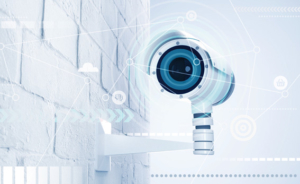IEMN and IRCICA promote their bioinspired image sensor technology
with an AI industrialist
This valorization concerns a neuromorphic technology allowing the implementation of an energy-efficient AI, for the joint development of bioinspired optical sensors with YUMAIN, with the support of SATT Nord.
IEMN [1] and IRCICA [2] are developing their research work on embedded Artificial Intelligence (AI) in the context of a close collaboration with the company YumAIn [3], specialized since 2011 in embedded AI-based artificial vision systems. This collaboration is part of a co-maturation of a neuromorphic technology with ultra-low energy consumption developed within the two laboratories and already the subject of a portfolio of patents [4] matured and valorized by the SATT-Nord and licensed to the company YumAIn. The researchers involved from IEMN/IRCICA, Christophe Loyez and François Danneville, have laid the first milestones of proof of concept of this technology at the scale of image sensors obtained thanks to the financing of maturation projects by SATT Nord.
These bioinspired image sensors, using the technology of the patents [4], will be integrated into the embedded electronics developed by the company YumAIn. This collaboration between IEMN/IRCICA and YumAIn researchers, with the support of SATT Nord, will allow the technology to evolve by integrating joint knowledge and skills and aims to obtain a prototype with at least a TRL6 industrial maturity, thus promising a short time-to-market.
These new-generation sensors will incorporate on-board Artificial Intelligence with consumption levels a thousand times lower than those of the current generation. Presented as a key disruptive technology to meet the energy challenges of sustainable development, the applications primarily addressed are home automation, mobile robotics and transportation. They can also find their place in the field of the Internet of Things (IoT) to monitor human activity in the context of smart cities or wildlife to preserve biodiversity. Moreover, thanks to the attention paid by this technology to the reduction of energy consumption, it brings an eco-responsible answer to a worldwide need for the expansion of IoT and Industry 4.0.
[1] Institut d’Électronique, de microélectronique et de nanotechnologie (CNRS/Université de Lille/Université Polytechnique Hauts-de-France/Centrale Lille Institut)
[2] Institut de recherche sur les composants logiciels et matériels pour l’information et la communication avancée (CNRS/Université de Lille)
[3] YumAIn (https://yumain.fr/ créée en 2011), basée à Dijon.
[4] Brevets :
• « Synapse artificielle commutée » (WO2019219618), en copropriété CNRS et Université de Lille/Yncréa Hauts de France/École Centrale de Lille/Université Polytechnique Hauts de France, publié le 21/11/2019.
• « Capteur optique » (WO201981562), en copropriété CNRS/Université Lille/Yncréa Hauts de France/École Centrale de Lille/Université de Valenciennes et du Hainaut Cambresis, publié le 02/05/2019.
• « Neurone artificiel » (WO2017178352), en copropriété CNRS/Université de Lille 1, publié le 19/10/2017.
Christophe Loyez, DR CNRS, christophe.loyez@univ-lille.fr
François Danneville, PR Université Lille, francois.danneville@univ-lille.fr
Michel Paindavoine, Directeur Technique / CTO YUMAIN, michel.paindavoine@yumain.fr
François-Xavier Denimal, Business développeur SATT Nord, francois-xavier.denimal@sattnord.fr
















